Seoul, the enigmatic South Korean capital city, would have been virtually unrecognizable fifty years ago. Today it is a vibrant, ultra-modern metropolis with the extremes of traditional and futuristic rubbing shoulders and suffused with culture. Here are some of the best things to do in Seoul while keeping that budget under control.
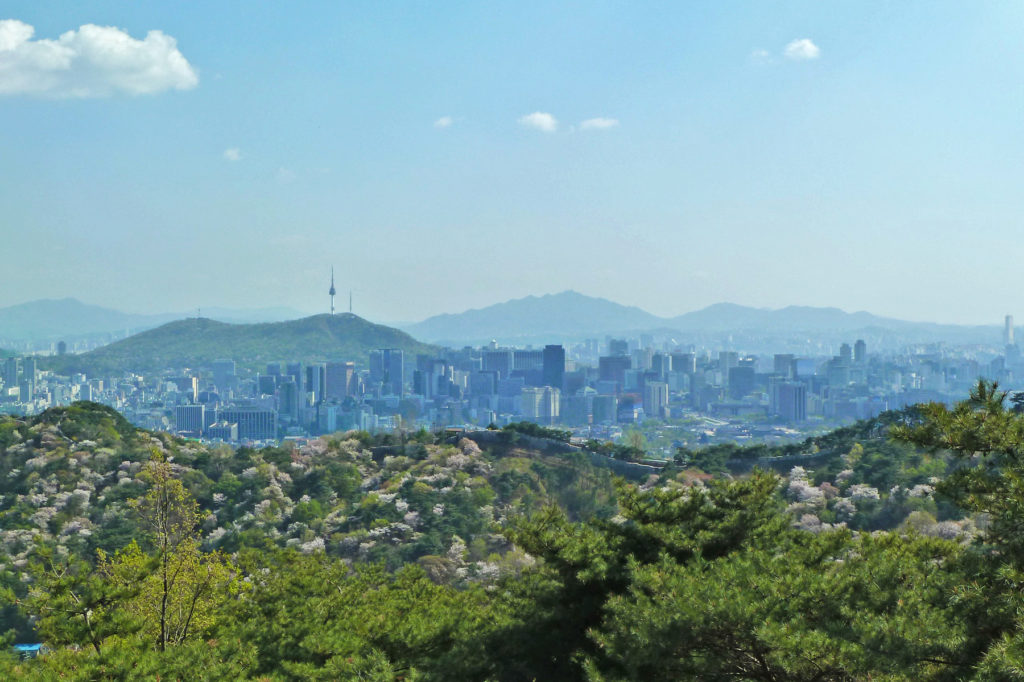
View of Seoul from the mountains to the north (Photo: Paul Stafford)
Seoul goes through four distinct seasons. Summers can be oppressively hot and humid, while winters can be exceedingly cold. As such the city has a wealth of experienced to be had both indoors and outdoors. The mountains on which the city is built are great for active recreational pursuits that don’t cost a thing, while the densely packed city is littered with indoor activities that are cheap. Here are some of the best.
Play computer games at PC bang
It might seem ridiculous to travel all that way to Seoul and then head straight to what appears to be a fancy internet café, but South Koreans seem to have an obsession with computer games. This huge part of popular culture manifests itself in many ways, including sponsored e-sports leagues, where teams of pro-gamers compete at League of Legends or StarCraft for big money prizes. The country has some of the fastest internet connections in the world and the computers at PC bangs (you’ll see signs everywhere saying PC방) are gaming-ready. Access is cheap, costing around $1.20 per hour. An alternative is the PlayStation (Pulsa) bang, which has the same premise, with all the equipment and games included.
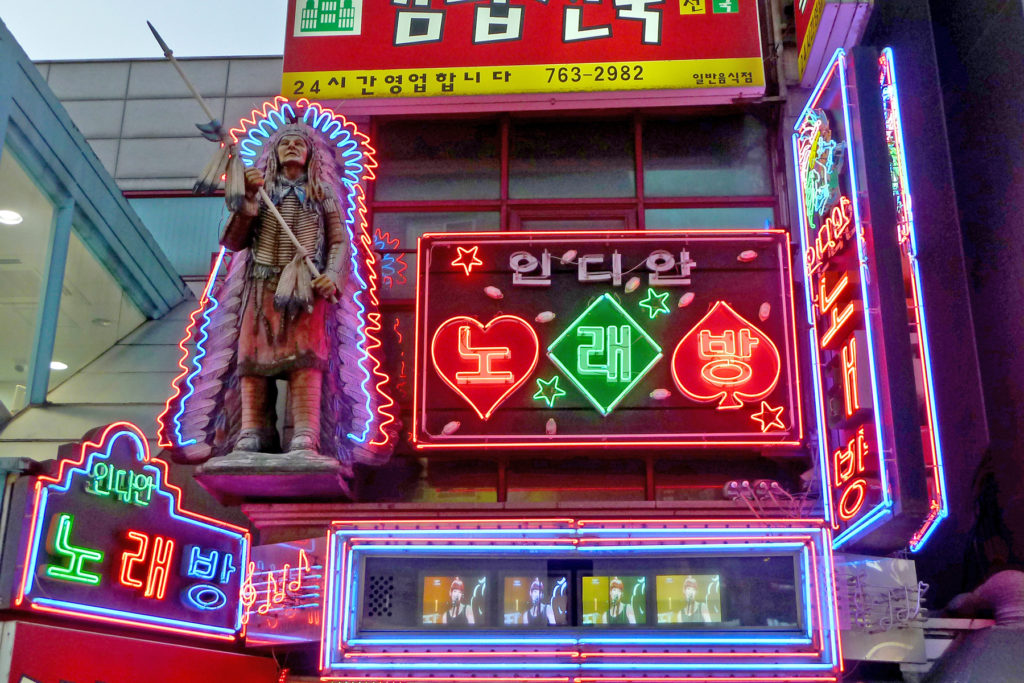
Sign for a noraebang karaoke room (Photo: Paul Stafford)
Sing karaoke at a noraebang
Another ‘bang’ (Korean for ‘room’ and spelled 방), this time for singing, is the noraebang, or song room. These are just as ubiquitous in Seoul as the PC bangs and just as good when it comes to quality and value. Each noraebang is divided into private booths or rooms of varying sizes, which you choose depending on the size of your group. Each room has its own microphone and control panel, plus the beefy books of songs available (often in English, Korean, Chinese and Japanese). It is completely fine to go in there alone and get some practice done, but the real joy is singing with a group of friends. Often the price you negotiate for the rooms will include a bottle of soju and/or beers.
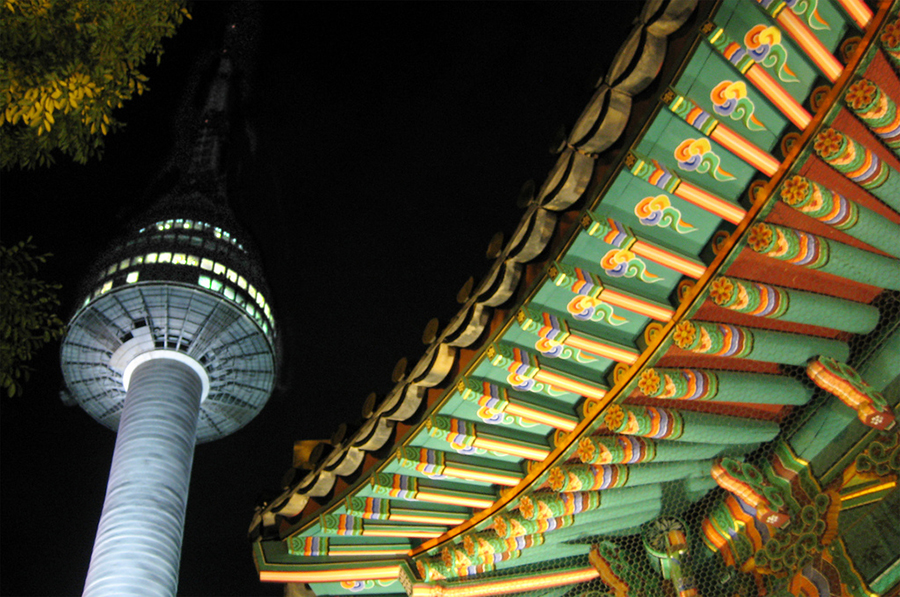
Sights at the top of Namsan (Photo: maximillian_schaffhausen via Flickr / CC BY-NC-ND 2.0)
Climb the steps to the top of Namsan
Right in the center of Seoul is a forest-covered mountain that has resisted the rampant development that has urbanized other parts of the city. You can be suffering sensory overload in the shopping district of Myeongdong one moment, then hiking up paved forest trails the next. It is the perfect leafy escape. There are numerous paths to the top of Namsan or even a cable car from the Myeongdong side. Paths frequently break at viewpoints overlooking the high rises of downtown Seoul. Namsan is particularly beautiful in fall, when the canopy is a blaze of oranges, reds and the yellows of the ginkgo trees.
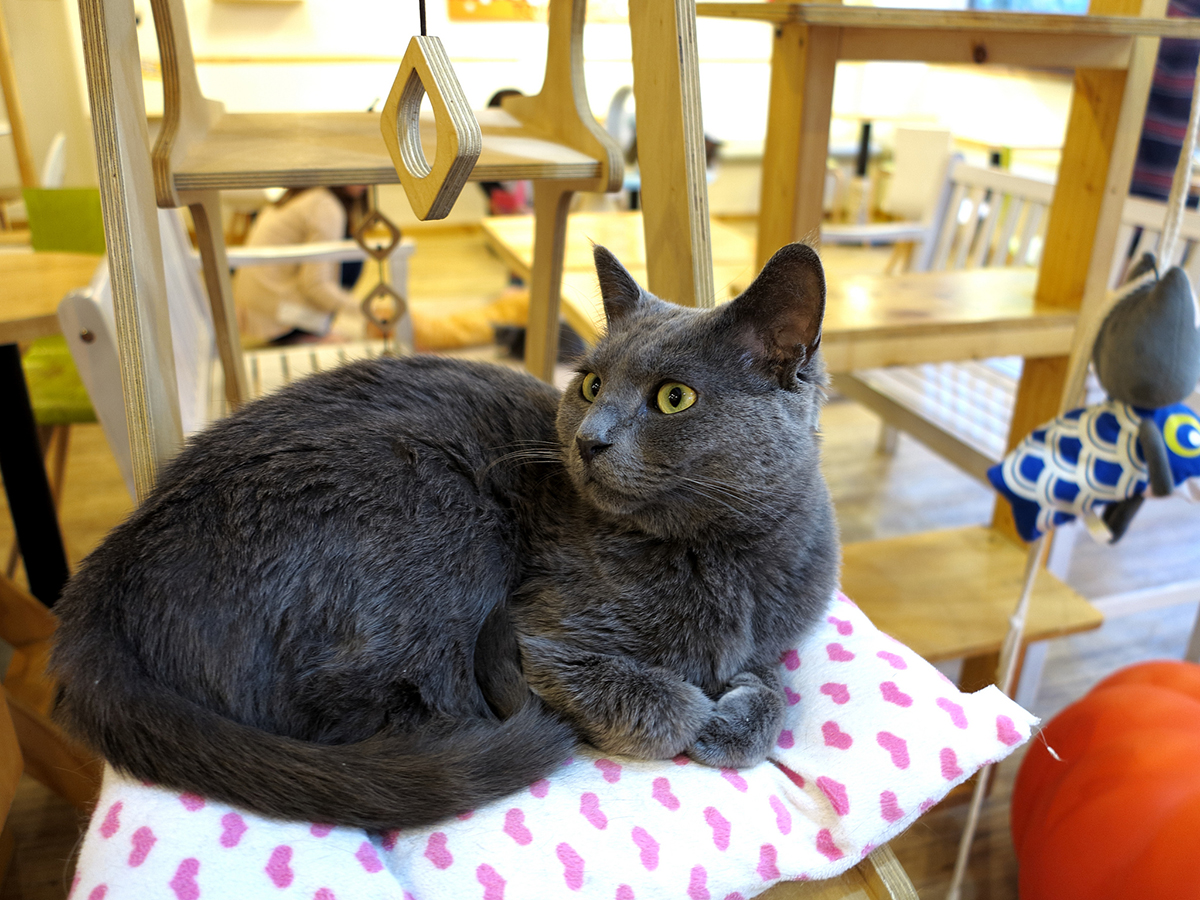
Pet cafes have become increasingly popular in Seoul (Photo: Feline DaCat via Flickr / CC BY-SA 2.0)
Sip coffee or tea surrounded by cute pets
While the animal café idea was born in Taiwan and popularized in Japan, it has been taken to a whole new level in Seoul. While there are venues where you can buy a coffee and drink it surrounded by dogs or cats, there are alternative animal experiences too. Bunny Café and Meerkat Friends are both pretty self-explanatory. Blind Alley however takes on more of a zoo-like quality with a resident dog, raccoon and pigs. Koopet on the other hand blends the traditional concepts of a café and a pet store, bringing you a place where you can buy a lizard and a coffee to go.
Bunny Café: 347-3 Seogyo-dong, Mapo-gu
Meerkat Friends: 364-3 Seogyo-dong, Mapo-gu
Blind Alley: 76 Cheongpa-ro 47-gil, Yongsan-gu
Koopet: Bongeunsa-r0 87-gil, Samseong 1 dong, Gangnam-gu
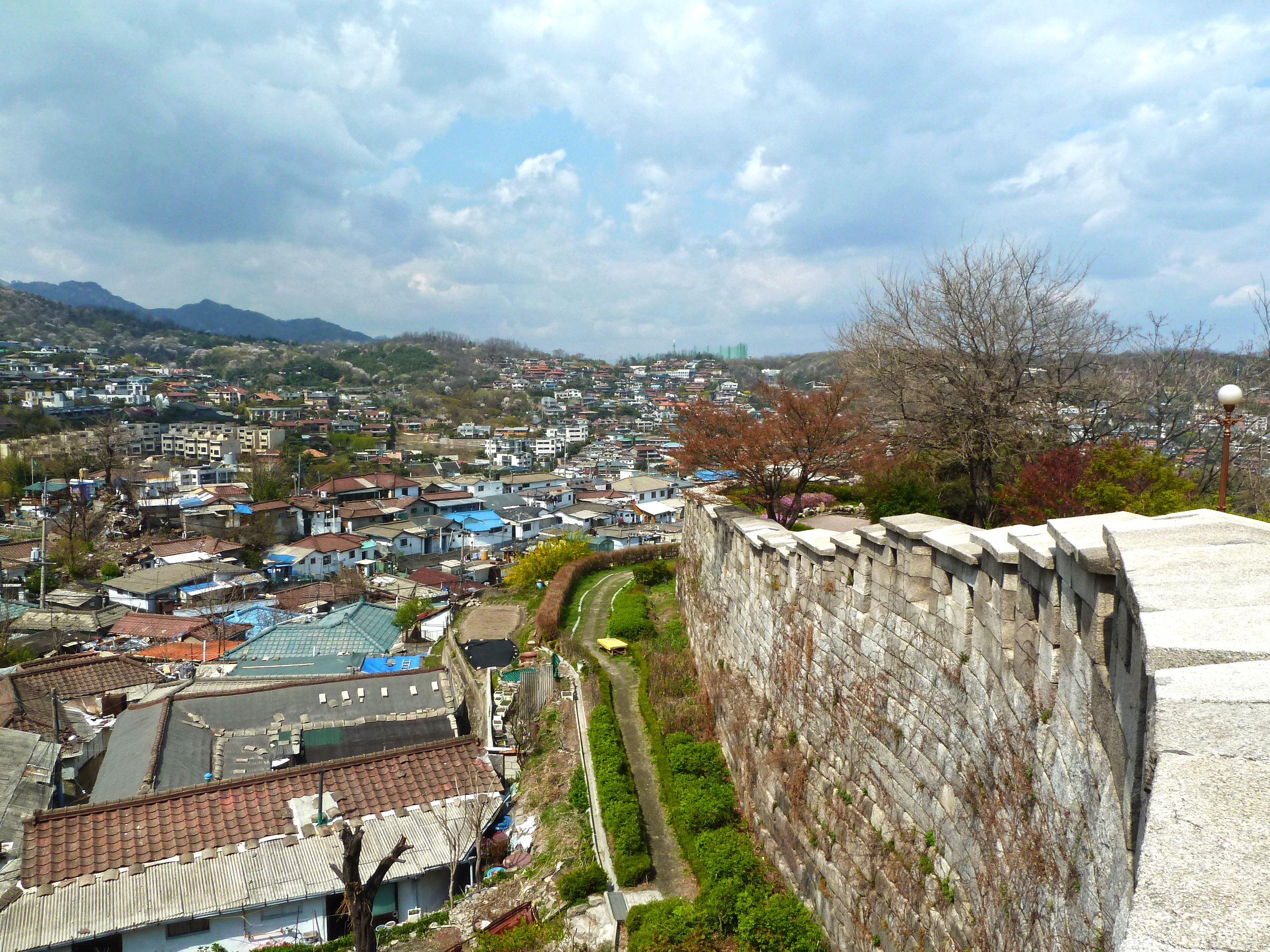
Seoul’s Fortress Wall (Photo: Paul Stafford)
Follow the old city walls around the north of Seoul
From close to the theater district of Hyehwa to the Blue House where the President resides runs a forest-covered mountain made doubly impassable by a wall. The Fortress Wall of Seoul was started in the 14th century and there are currently stretches of 18.6km (11.5 miles) that can still be followed. The walk along them leads up hills to some of the best viewpoints of the city, while passing through forests that teem with life and, in fall, color. The trails are free.
Gates include: Sukjeongmun, Changuimun and Hyehwamun
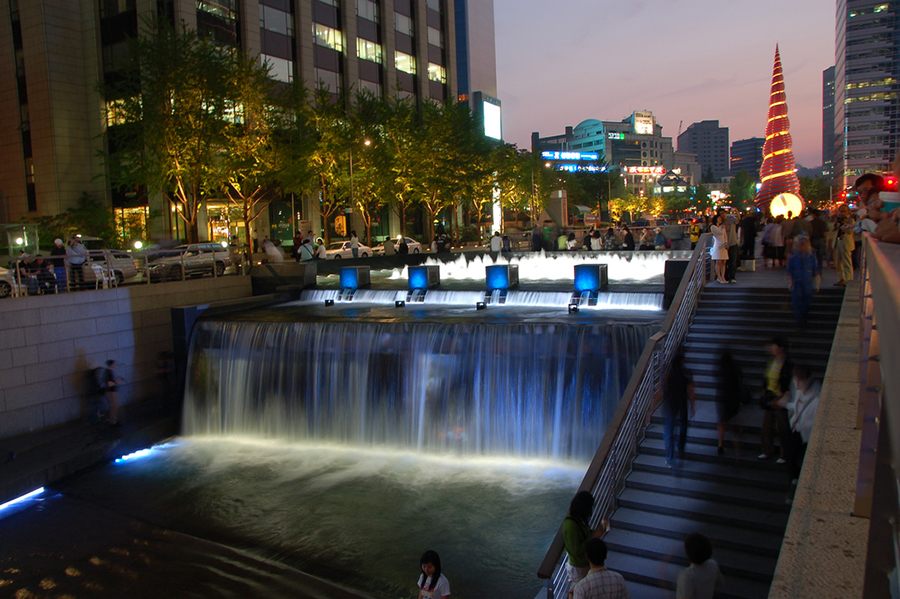
The Cheonggyecheon in central Seoul (Photo: RiNux via Flickr / CC BY-SA 2.0)
Wander along the Cheonggyecheon stream
Where now runs a peaceful stream through the commercial and market district of the city center there was once an elevated highway. That was demolished once the city’s metro system was built up enough to provide an alternative way into the city. The result is now a pleasant, car-free route connecting Gwanghwamun to Dongdaemun and continuing East until eventually flowing into the Han River. It is proof that modernization can be as much about green initiatives and urban renewal as it is about construction. Every November the stream is lit up at night by thousands of creative shapes in the Lantern Festival.
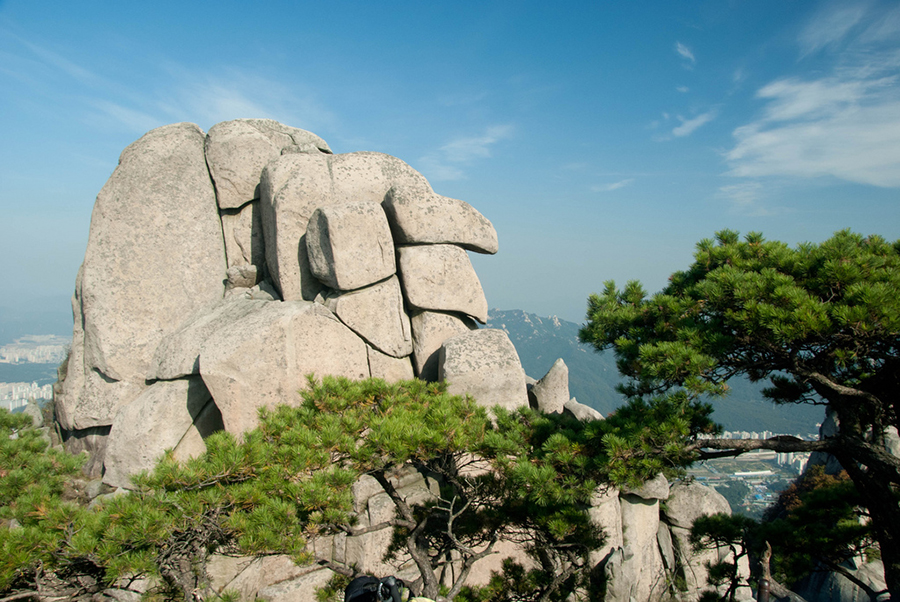
Bukhansan National Park (Photo: theaucitron via Flickr / CC BY-SA 2.0)
Hike past temples to the top of Bukhansan Mountain
Bukhansan is a beautiful mountain. The pale, smooth rocks, jut at extreme angles, broached by trees and painted a delicate pink at sunset. The mountain has its own National Park surrounding it, that pushes deep towards the city center. This may be the favorite place for Seoulites to get a break from the city. Moments after leaving the roadside on the various rocky trails, signs of modern life melt away into a peaceful twist of dirt trails and graceful temples. At the top strangers chat and share a glass of warming makgoeli, or head along precarious ridges supported by ropes drilled into the mountain face. The latter route is for more experienced hikers.
Observe the traditional houses of Bukcheon Hanok Village
The streets to the northeast of the National Folk Museum have hardly changed, it would seem, in decades. While less and less of the traditional single-story houses remain, bulldozed to make way for high-rise apartments, in Bukcheon they all remain intact and impeccably cared for. The winding streets are fringed by the crimpled tiles atop outer walls with perfect strap-pointing, or the ribbed roofs and wooden window frames of the houses themselves. This is Seoul’s top Instagram-friendly spot so arrive early to avoid the crowds.
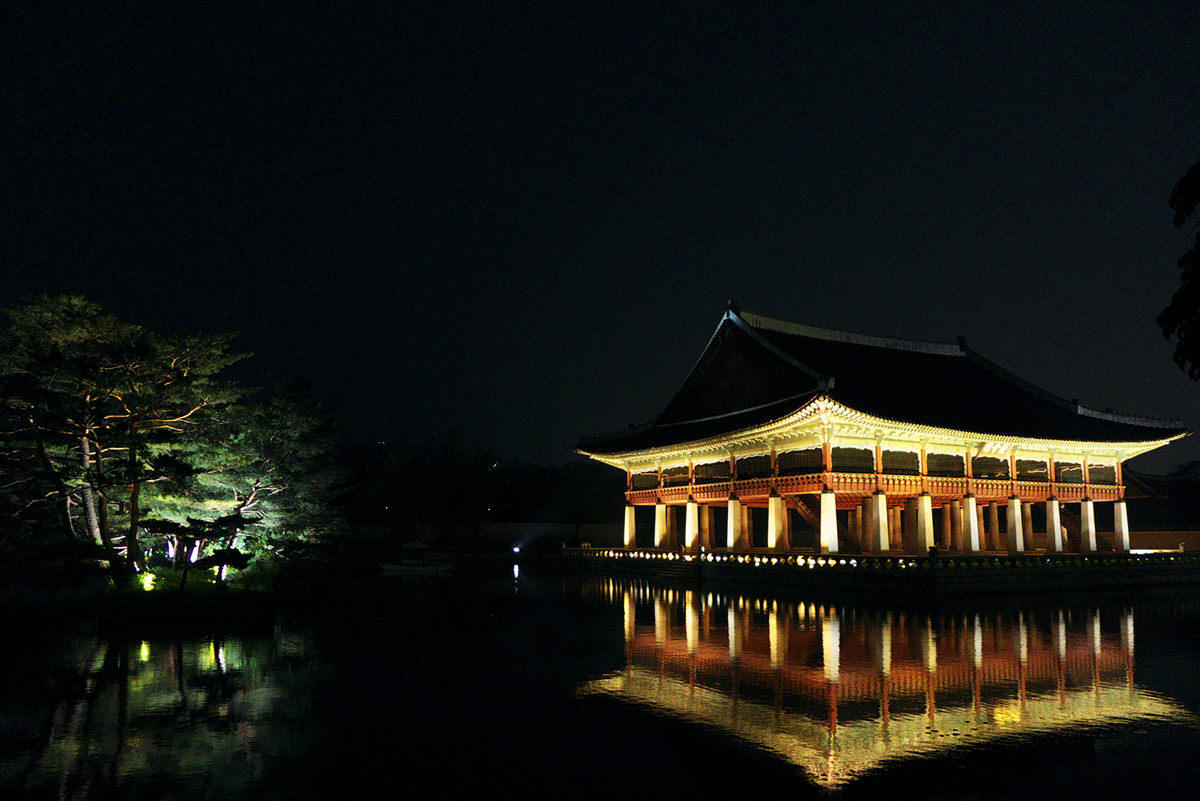
Gyeongbokgung at night (Photo: travel oriented via Flickr / CC BY-SA 2.0)
Visit large ancient palaces – Gyeongbokgung and Changdeokgung
Although much of Korean’s historical wealth was destroyed during the era of Japanese occupation (1910-45), the great royal halls and temples have been carefully rebuilt with no expense spared. In the city center the two finest examples are the palaces of Changdoekgung and Gyeongbokgung. Both sit surrounded by their own large swath of walled territory, the former mostly forested, the latter a more open network of paths and traditional buildings. Both are a delight to explore and deserve at least a few hours each to experience fully.
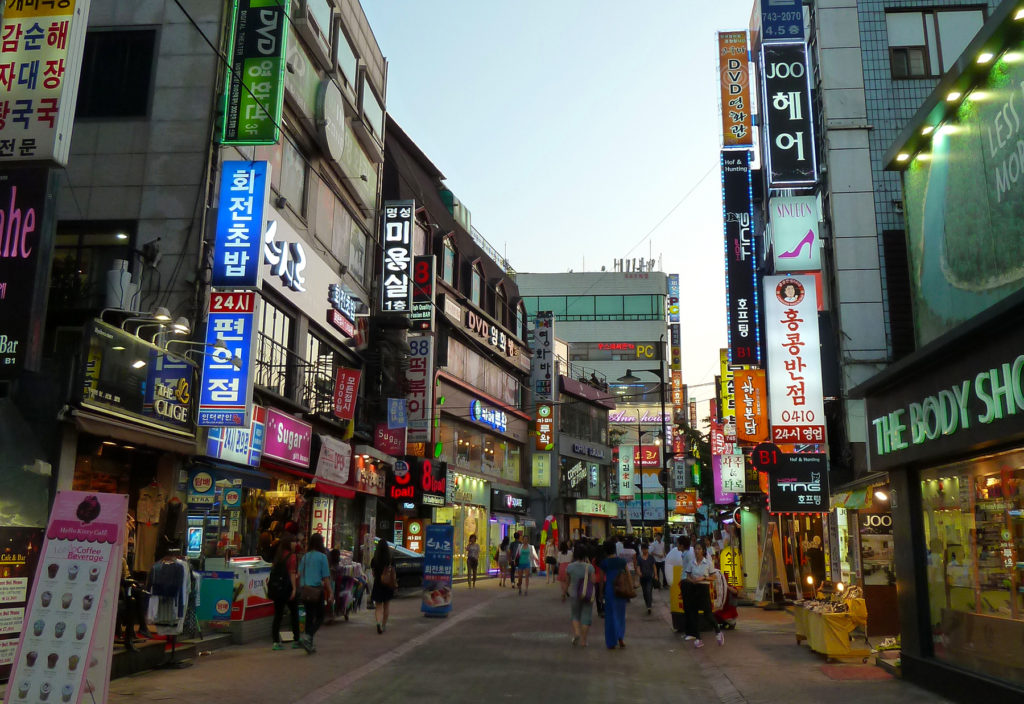
Bright lights of a Seoul shopping street (Photo: Paul Stafford)
Experience the bright lights of Myeongdong after dark
Seoul remains a city where high street commerce is alive and well. Shopping areas like Myeongdong are in fact so vibrant that buildings are packed with activities and functions on every level. Shops and restaurants line the street-level, then the levels above are filled with more restaurants, and services like PC bangs a DVD bangs (mini private cinema rooms). And each one of these places jostles for attention with bright lights and color. Add in the tumult from the streets of music and people and it can be quite overwhelming to the uninitiated, but a great shopping experience.
Take selfies in Iwha Mural Village
When looking to transform a lackluster neighborhood, a surefire way to inject some life into the streets is with color. That is exactly what locals in Iwha, north of Dongdaemun market, have done. The murals take on various forms: Many have an animal theme, while others celebrate people and elements of local society. Beyond paintings there are mosaics and sculptures, with an increasing number of galleries and coffee shops opening up to receive the custom of visitors.
Closest station: Hyehwa
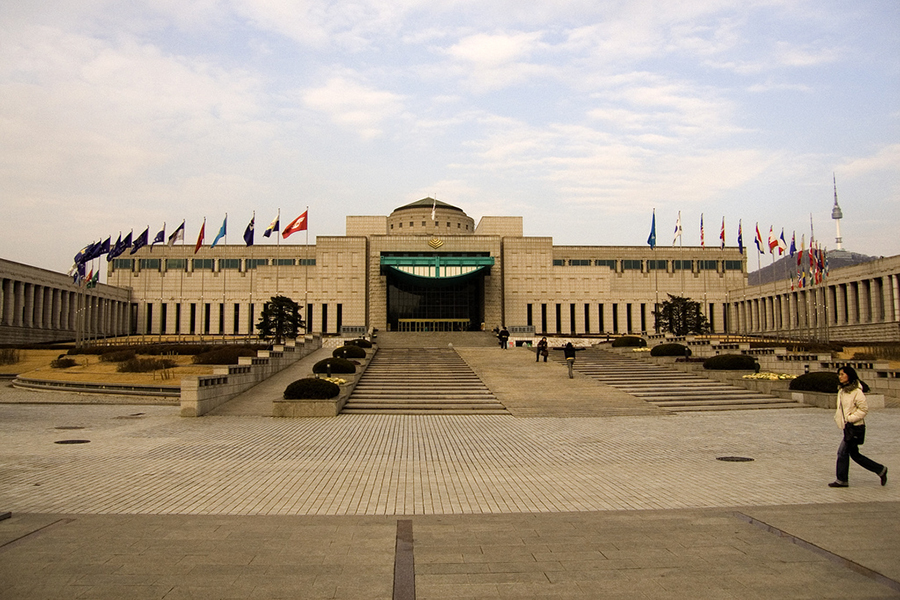
The vast War Memorial of Korea (Photo: Andrew Currie via Flickr / CC BY 2.0)
Learn about the country’s tumultuous past at the War Memorial of Korea
To understand Korea fully, it must be viewed in the context of the Korean War, which lasted from 1950-53, but continues without a ceasefire, as a mostly cold conflict until the time of writing. The most promising hint of an end to it came in 2018, when North and South Korea signed the Panmunjom Declaration outlining a path to peace. You can learn all about this process and the war at the imposing War Memorial of Korea. The main museum, with its thousands of artifacts, is free. There are also special exhibits (fee) and cultural events. Huge military aircraft are parked outside the building.
29 Itaewon-ro, Namyeong-dong, Yongsan-gu
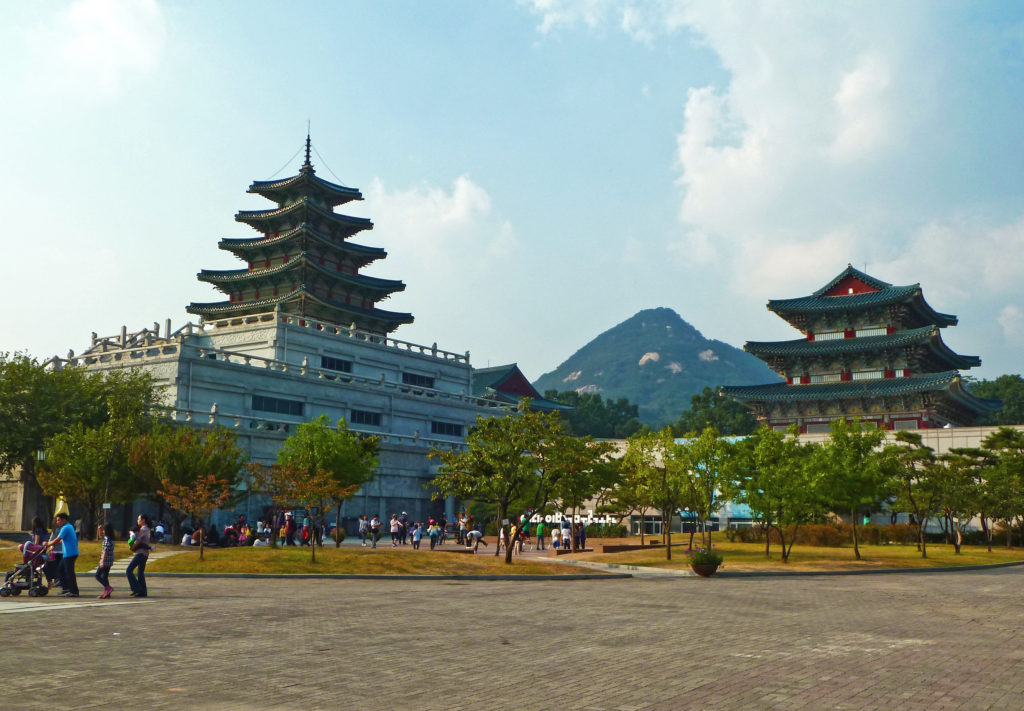
The National Folk Museum of Korea (Photo: Paul Stafford)
Learn about Korean traditional culture at the National Folk Museum
Another fantastic (and free) museum in Seoul that should be on everybody’s must-visit list is the National Folk Museum of Korea, which offers insight into the country’s past customs, religion and governance. Coupling this trip with the war museum and some of the more modern experiences would give a thorough, although by no means complete, overview of what South Korea is all about. The building itself is a beautiful multi-story pagoda housing three permanent exhibition halls that detail the country’s rural past and traditional customs. There is also a further outdoor exhibition with recreations of old Hanok homes and sculptures.
37 Samcheong-ro, Sejongno, Jongno-gu
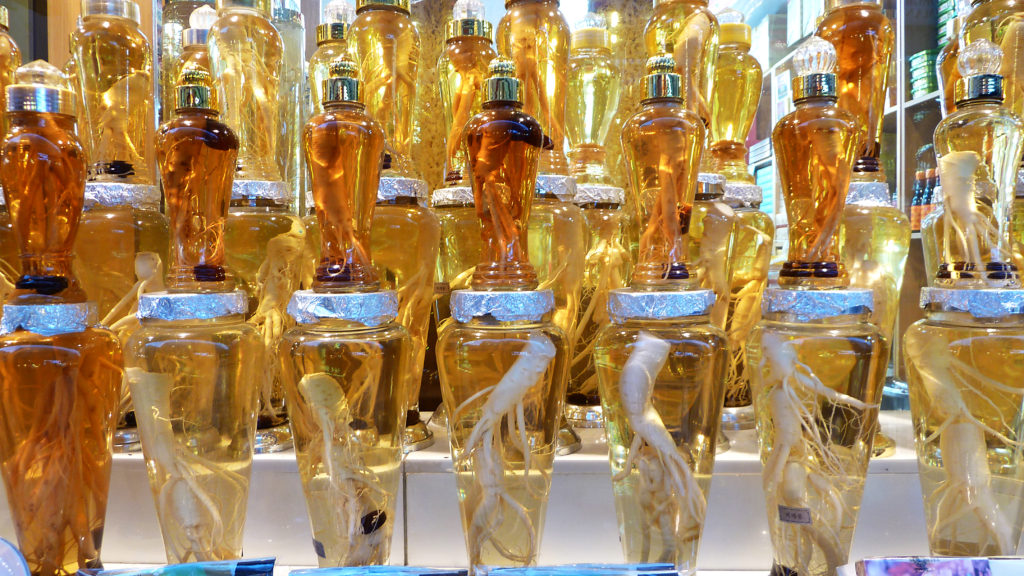
Ginseng on sale at a market in Seoul (Photo: Paul Stafford)
Discover weird and wonderful new ingredients at a food market
Korea’s food markets are fascinating places. Like markets the world over, you will find many of the usual fruits and vegetables on sale in brightly colored piles, as well as strings of dried fish or giant tanks filled with live spider crabs. However, there will always be plenty of edible curiosities as well, particularly in the seafood section like shellfish, various types of seaweed, and things that look like little brains. Elsewhere glass jars of the expensive and highly sought-after ginseng root, known for its healing properties, fill store windows.
Noryangjin Fisheries Wholesale Market, 674 Nodeul-ro, Dongjak-gu
Kwanjang Market, 88 Changgyeonggung-ro, Jongno 4-ga
Unwind at a jimjilbang
Yet another ‘bang,’ and by far the most relaxing, is the jimjilbang, or sauna. Often spread over multiple levels, the saunas often include wet and dry sauna facilities. Wet saunas have heated pools and jacuzzis and the dry sauna sections have sweat lodges of varying temperatures and even cold rooms, where the temperature is well below freezing. It’s not for the prudish however; nudity is the way to go in the sauna sections, although these areas are separated by gender. The common areas usually feature the dry sauna facilities, and for these, light cotton clothing is provided. Particularly in the colder months, Seoul’s jimjilbangs offer welcome respite.
Silloam Sauna, 49 jungnim-ro, jungnim-dong, Jung-gu
Dragon Hill Spa & Resort, 40-712 Hangangno 3-ga, Yongsan-gu
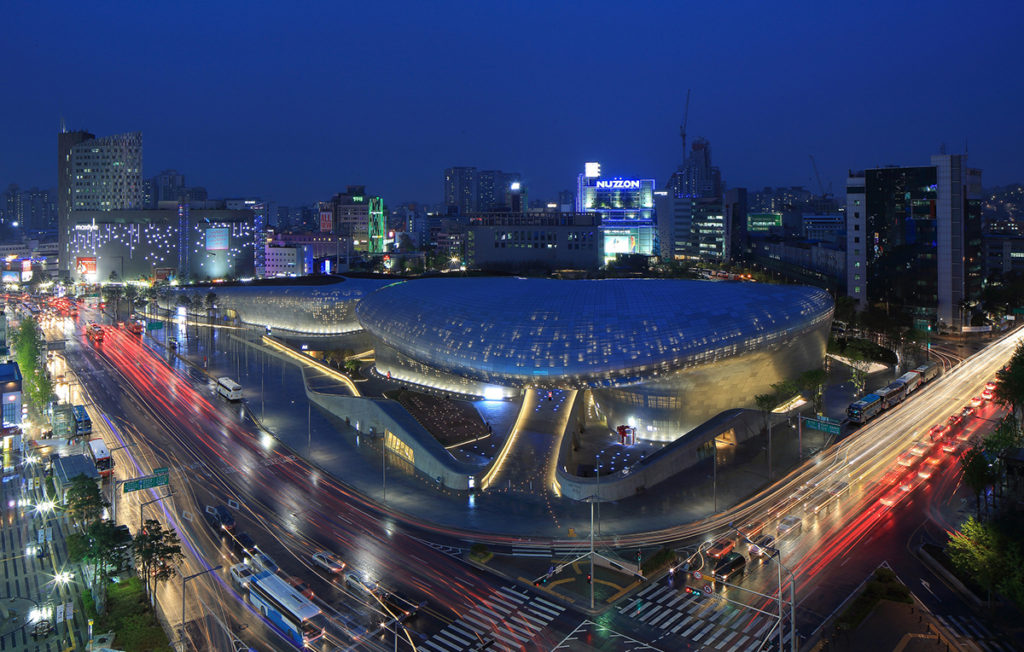
Dongdaemun Design Plaza (Photo: Eugene Lim via Flickr / CC BY 2.0)
Explore Dongdaemum Design Plaza (shows exhibitions etc)
Zaha Hadid’s important contribution to South Korea is the mighty Dongdaemun Design Plaza, which was opened in 2014. The sweeping curves and lack of right angles in a giant metal structure that has no obvious windows gives it something of an extra-terrestrial quality when lit up at night. But step aboard and you will find a range of public spaces within, including an exhibition hall, design museum, cafes and a large conference hall. On the east side, outdoors, is the Dongdaemun History and Culture park, filled with sculptures and art installations.
281 Eulji-ro, Euljiro 7-ga, Jung-gu
Go cycling along the Han River at Yeouido
Yeouido is an island in the Han River that hugs the south bank. It is also a spot where some of the more modern buildings and high-rises are located, surrounded by a thick band of land around the edges of the island that has been left as parkland. Particularly in summertime the riverside Hangang Park, as it’s known, is filled with picnicking groups of friends and family. Bicycles can be rented from little huts in the park by the hour. Another popular time to visit here is during the spring cherry blossoms season, and Yeouido is one of the best places in Seoul to see them.
Request your favourite music at a vinyl bar
One of the joys of Seoul’s nightlife scene are the quirky bars that exist, particularly in the more historic and youthful neighborhoods of Hongdae and Hyehwa. Here you will find underground bars filled with vinyl LPs lined against the walls, like a giant, walk-in jukebox. Order and drink and write down your favourite songs on a little slip of paper and hand them over. Before long your suggestion will be blasting forth from the speakers. It often leads to impromptu singalongs and the discovery of a lot of great new music.
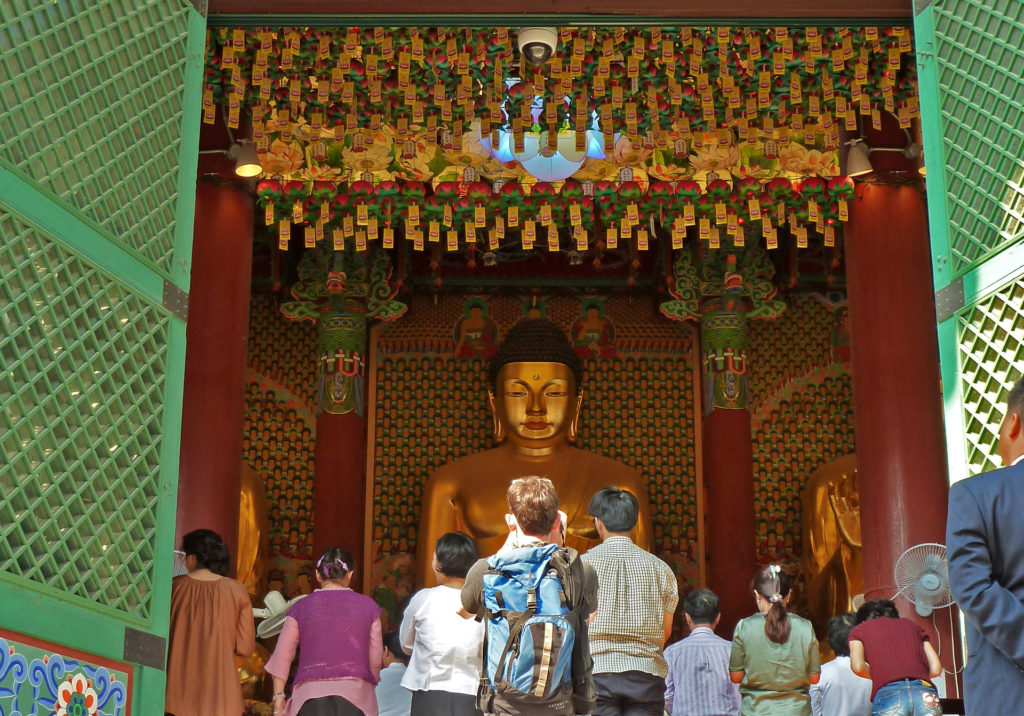
Jogyesa Temple’s main entrance (Photo: Paul Stafford)
Discover Korean Buddhism at Jogyesa Temple
Religion is important in Korea and although forms of Christianity are the most popular, Buddhism’s history in the country goes back much, much further. Jogyesa is Seoul’s most important symbol of the Korean Buddhist faith. The original temple at this site dated to the 14th century. Every inch of the ornately carved eaves is painted and the whole site is imbued with flourishes of color in the form of flowers or paper lanterns.
55 Ujeongguk-ro, Gyeonji-dong, Jongno-gu
Wander along Seoullo 7017
Taking its inspiration from New York’s High Line, Seoullo 7017 is another example of a site in Seoul using progressive urban renewal ideas to breathe life into something, in this case a former overpass once used by cars. Now it is only open to pedestrians and the elevated walkway is covered in plants and benches along its 1km route. Seoullo 7017 begins beside Seoul Station and winds eastwards towards Namdaemun market area, which borders Myeongdong.
By Paul Stafford